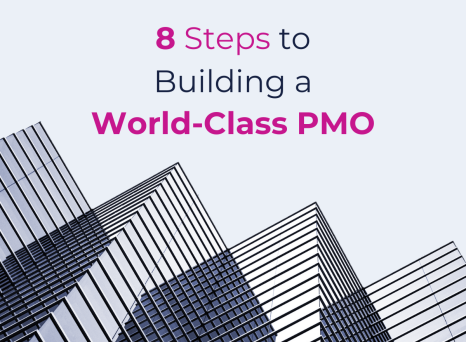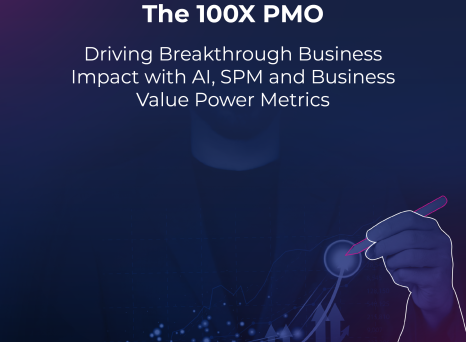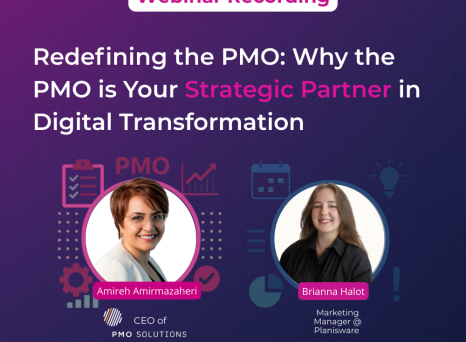Tell us about your recent experience building a portfolio management process.
The last 5 years of my career, I was asked to take a corporate position, and I was asked to take a look at DuPont’s R&D. It was about $2.2B of R&D at the time across 12 highly diverse global businesses and a fairly large central research organization. I was asked to see what I could do to help improve the innovation processes, the productivity of the R&D and innovation investment that was used across these businesses and central research.
Developing a common Stage-Gate framework
When I first got into this role, one of the things that I saw was the discontinuity of all the processes. A good example was Stage-Gating which is utilized in most corporations. I added up that we had about 26 flavors of Stage-Gating going across the corporation. It was becoming apparent that the reason we weren’t collaborating effectively was we weren’t speaking the same language.
So one of my first tasks was to come up with a corporate Stage-Gate framework that all the businesses can adopt and map into. But in some cases, some businesses had very strong Stage-Gating, a lot of gates; what we asked them to do was just map into the corporate process. But for the other businesses it turned out that by developing this corporate process, they saw real benefits, so they adopted the corporate process.
Within a year or two, we had a common language that we could speak. If one business was talking about a product in Stage 2, we could relate to what that meant to another business that was in Stage 2. Recognize that DuPont’s portfolio was highly diverse. It was everything from Crop genetics to food nutrition to electronic materials to polymers, so you had all different kinds of technologies, products, [you had] all different kinds of life cycles ranging from 10-15 years to 18 months. The idea of establishing a common Stage-Gate framework got everybody a common language.
Measuring the return on investment of the R&D portfolio
The next task that I was asked came down through the CTO from the CEO of the corporation. The challenge was: We’re investing $2.2B of R&D. What are we getting? How do we measure the return on investment for this?
And again, I took the task on of looking at ways of finding how to measure the overall investment in the corporation. The way it started again was doing some fundamental research, talking to outside experts. There’s been all kinds of theories about how to manage and measure R&D from the top down.
Through the research I did, what I effectively found out was that all R&D is not treated equally. So I created four categories of R&D, just like the common Stage-Gate framework, but in this case it was portfolio measurement. The four categories were:
- Discovery and early stage development – where there’s all this front end activity, high risk, a lot of activity.
- The second category is what I call Projects that create top-line growth for the corporation and when I speak about top line growth, I talk about projects that are creating growth year over year, so revenue that grows year over year, and you subtract cannibalization. In that category it could range from very transformative to highly differentiated projects. But the point is those projects are creating top-line growth.
- The third category is what I would call Product Extensions. Those are the incremental product developments that are used in a corporation. Some of those are applications developments, some of those are product enhancements, some of those support [different] kinds of products. But, what I found in my investigation is that many of those projects were not necessarily creating top-line growth. They’re really there to maintain and offset the competitive fade in the business.
- And then the last category is what I would call Maintain and Support. That’s the kind of R&D you supply to manufacturing for regulatory support, for service support, etc.
Anyway we created these four categories of R&D and some very explicit metrics around how to measure those.
In fact, I’ll give you an example. To get into that second category, those top-line growth projects, we have very strict financial metrics of how to get in there. And we had thresholds of how much revenue they had to create or how much NPV, etc. So this was not a subjective test of how to measure things. It was either you were in or you were out.
Through that kind of methodology, we were able to get a really good idea and categorization of the portfolio across 12 highly diversified businesses, $2.2B of R&D, and be able to show some patterns and gaps in categories that we could maybe take some corrective action on.
How did you use historical project data to help improve the innovation portfolio?
As we started creating these new categories, these four categories of how to categorize projects, obviously the question is: How did we do in the past? How did we do over the last five years, etc. So, to the extent that was possible, because we didn’t have those categories in the past, we went back and dug up some historical project information, and segmented out what we thought were the top-line growth projects in the portfolio.
And by doing that, and then looking at the actual performance at five years, it’s like anything else – we saw what we expected. We saw some programs that were cancelled, some programs that didn’t meet expectations, some programs that slightly exceeded [expectations] and maybe one home run, one that was a real blockbuster.
Risk-adjusting the R&D portfolio
But it’s kind of validated our thinking about the portfolio, and also what we introduced: how to risk-adjust the portfolio, depending upon what stage the project was in – not judging by the magnitude of the project, but what stage it was in. If a project was only in Stage Two, as an example, and they were projecting $50M of top-line growth in five years, we would only count 20% of that in the portfolio. We’re not trying to punish the project, we’re just trying to risk-adjust the portfolio because again, based on historical evidence, if you could do this risk-adjustment, based on where a programs are in that common Stage-Gate, you can get a projected outlook of what the revenue forecast could be from that portfolio.
And that gives a realistic assessment of what the corporation could expect for topline growth from the R&D portfolio. It’s giving a prospective look versus a retrospective look.
How should a company proceed in selecting a PPM tool?
Start with the processes
I’m a firm believer that rather than having the tool come first, it should come near last. I believe a company should spend a little more time on their business processes first. And I think that’s why it was important for us to get some of our key business processes in place first. Then it becomes need based. There’s a gap that needs to be fulfilled; we need to access the information because people are asking for the information.
So I would suggest getting your business processes first.
Assessing the current state
Then when it’s time for saying: “We want a PPM tool.” I think it’s like anything else, you need to evaluate the current state. And what do I mean by that?: What are you using today? What is each business using today? Is it Excel? Is it some type of custom database? Is it Microsoft Project Management? What is it today?
Get an assessment of what’s going on. Get an assessment of where some of the problems are. What I’m trying to say is you need to create a value proposition to why you need to bring a PPM tool in. And it’s going to be different for different people. It may be that you want to reduce waste and time in collecting information. Or it may be we want to improve decision-making, we want to be quicker on decision-making. Or we want less iterations on the financials. We want more realistic forecasting on project scheduling. So: create that value proposition.
How to evaluate vendors
When you talk about doing an evaluation of any vendor, Planisware or anybody, don’t just invite them in and do what I call a dog-and-pony show for several hours. Decide what are the key characteristics for what you’re looking for. Is it project scheduling? Is it timecarding? Is it visualization, as an example? And focus in on those key areas you want to see demonstrated. Then give the vendor kind of a script or simulated data of what you want to use to look at. It wouldn’t take a lot of time to simulate the kind of information you’re going to be looking for reported. Make the vendor go to work.
The other thing is to get a good and solid evaluation team. Don’t just have R&D people. Get some IT people involved, some IT architects, get sales and marketing involved, get the strategy people involved, get a diverse team to help you through the evaluation. And by all means, get the people who are going to use it involved. Because they have to be a part of this process. That’s all important to do the evaluation, to get to the point where you want to select.
Setting up a pilot
Now, when you’re at the point of selection, you have to be able to line up some pilot businesses or pilot functions that want to do this. This is not something where you do proof-of-concept and then try to get the CEO to mandate this. It’s not the way this works. You have to get a couple of functions or businesses that are willing to implement the system, because the only way you’re going to get this fully implemented over time is based on your successes. That’s my recommendation.
A word about sponsors
And by all means, like any other major change management process, you need sponsors. I don’t care if it’s the CTO, or the chief marketing officer, or the chief information officer, find yourself a high level sponsor because that person’s going to be key in opening some doors for you to kind of get this in place, give it a try, and demonstrate some successes. Guaranteed, once you get through that, and you have those successes, and people see the value, then the rest will come. That’s how you’ll get to the point to develop a standard.
Why was Planisware selected to support the enterprise portfolio management process?
I wouldn’t be here if I didn’t believe it was a solid platform to get involved with, because believe me, there were other options that we looked at, but this one in particular seemed to have all the elements that we were looking for. What was important for us, believe it or not, was “ease-of-use” because we’ve experienced IT systems that were forced on us that made us lose productivity operating with it. So ease of use was good, the overall licensing expense seemed to be right on the mark, there were just a lot of features that Planisware seemed to have, and quite frankly, since we’re a large company, we don’t want to be stuck with a small company supporting us.
Planisware had the depth, breadth, and the infrastructure to support us. And there’s a lot of other smaller companies that claim to have this, but really don’t. The other thing too is, I thought Planisware was really upfront in exposing us [to], in helping us get some referrals from people who were using the system, very open, very friendly. Even what you’re doing here today in the user conference, it’s kind of refreshing to see that you have new prospects in here. And that’s the best tool overall – to see how other people are experiencing it.
And it’s not going to be easy. Going through any kind of change and implementation is going to difficult but we felt Planisware was a partner with us going through this implementation.




